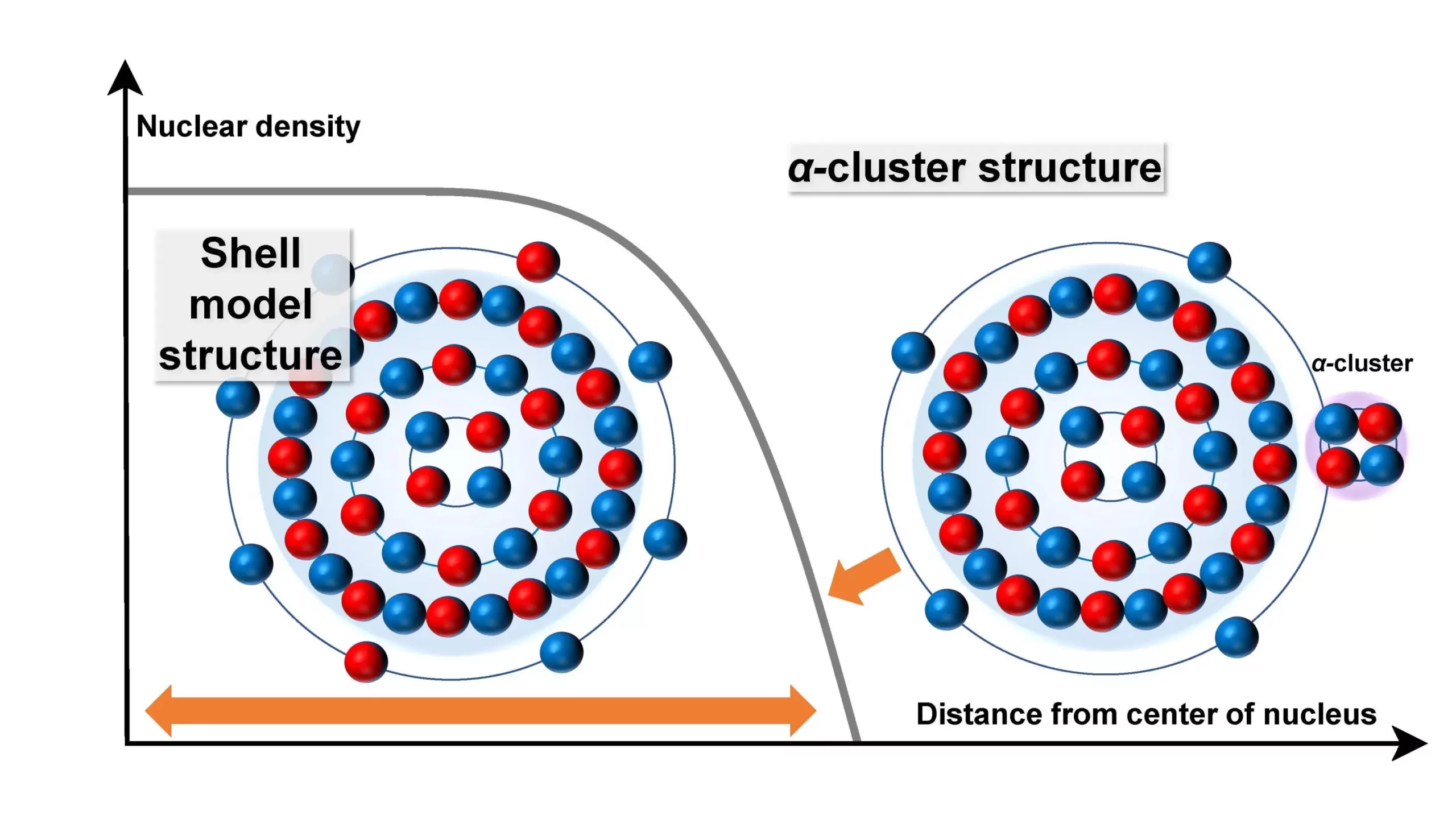In the intricate tapestry of our universe, the atomic nucleus serves as a fundamental building block. Comprised of protons and neutrons, these particles operate in realms often inaccessible to our senses. Recent research from a team at Osaka Metropolitan University sheds light on the elusive nature of nuclear structure, challenging our long-held beliefs about atomic composition, specifically in titanium-48. Their findings are not merely academic; they hold the potential to reshape our understanding of nuclear physics and the mechanisms driving alpha decay, a process that has mystified scientists for nearly a century.
Breaking Down Traditional Models
The research team, including graduate student Maito Okada, Associate Professor Wataru Horiuchi, and Professor Naoyuki Itagaki, embarked on an exploration into the heart of titanium-48, which is characterized by 22 protons and 26 neutrons. Utilizing theoretical models, they thoroughly compared their calculations against existing experimental data to ascertain whether this isotope exhibited a shell model structure or an alpha-cluster configuration. The distinctions between these models are profound. While the shell model suggests a symmetrical arrangement of particles, the alpha-cluster model posits a more asymmetrical framework where alpha particles—similar to helium nuclei—occupy the outer regions.
The implications of their findings are considerable; they imply that the structure of titanium-48 is not static but rather fluctuates based on the spatial dynamics of its protons and neutrons. This revelation challenges decades of nuclear physics reasoning, suggesting a more complex interplay of forces at work within atomic nuclei than previously assumed.
The Importance of High-Energy Collisions
A critical aspect of the Osaka research involved high-energy collisions of protons and alpha particles with titanium-48. In nuclear reactions, the response of protons can be indicative of the structural configuration closer to the nucleus, while alpha particles shed light on configurations at the outskirts. The research outcome indicates that titanium-48’s nuclear structure may transition fluidly between these models depending on its internal spatial dimensions.
Professor Horiuchi remarked that these revolutionary findings could provide insights into the long-standing mysteries surrounding alpha decay. The research team’s work could be pivotal in addressing the gaps in our understanding of how heavy nuclei shed alpha particles, an enigma tied intricately to the Gamow theory, which has remained unchallenged for nearly a hundred years.
Broader Implications for Physics
The ripple effects of this research extend beyond titanium-48 itself. It invokes a re-evaluation of nuclear interaction theories and underscores the need for ongoing investigation into the so-called “nuclear landscape.” With the potential to redefine our grasp of nuclear decay and binding energies across a multitude of isotopes, this study serves as a guiding light for future research pursuits. The conclusions drawn from this study are not just steps forward; they are leaps into uncharted territories of atomic science.
As physicists look toward the future, it is imperative that they carry with them the understanding that nuclear structures can be dynamic rather than static. The Osaka Metropolitan University’s research is a compelling reminder of the mysteries that still reside within our atoms, waiting to be uncovered, understood, and applied toward the betterment of science and technology.


Leave a Reply